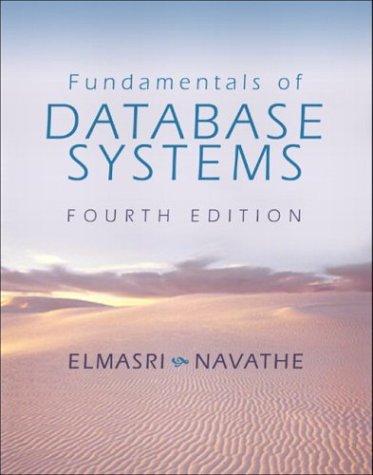Question
FIRST CODE How can I use the second code in the first code, if you can type the code in a way that will run
FIRST CODE
How can I use the second code in the first code, if you can type the code in a way that will run without errors, I would appreciate it.
#include
#include
#include
#include
#include
#include
// A struct to represent a rating given by a user to an item
struct Rating {
int user_id;
int item_id;
float rating;
};
// A struct to represent a predicted rating for an item
struct PredictedRating {
int id;
float rating;
};
// Reads the ratings from a .csv file and returns them as a vector
std::vector
std::vector
std::ifstream file(filename);
if (file.is_open()) {
std::string line;
// Skip the first line (header)
std::getline(file, line);
while (std::getline(file, line)) {
Rating rating;
std::sscanf(line.c_str(), "%d,%d,%f", &rating.user_id, &rating.item_id, &rating.rating);
ratings.push_back(rating);
}
file.close();
}
return ratings;
}
// Reads the test cases from a .csv file and returns them as a vector
std::vector
std::vector
std::ifstream file(filename);
if (file.is_open()) {
std::string line;
// Skip the first line (header)
std::getline(file, line);
while (std::getline(file, line)) {
PredictedRating test_case;
std::sscanf(line.c_str(), "%d,%d,%d", &test_case.id, &test_case.user_id, &test_case.item_id);
test_cases.push_back(test_case);
}
file.close();
}
return test_cases;
}
// Calculates the root mean squared error between the predicted ratings and the actual ratings
float calculate_rmse(const std::vector
float sum_squared_error = 0.0f;
for (const auto& predicted_rating : predicted_ratings) {
auto actual_rating_iter = std::find_if(actual_ratings.begin(), actual_ratings.end(), [&](const Rating& r) {
return r.user_id == predicted_rating.user_id && r.item_id == predicted_rating.item_id;
});
if (actual_rating_iter != actual_ratings.end()) {
sum_squared_error += std::pow(predicted_rating.rating - actual_rating_iter->rating, 2);
}
}
return std::sqrt(sum_squared_error / predicted_ratings.size());
}
int main() {
// Read in the training and test sets
std::vector
std::vector
// Initialize a map to store the ratings given by each user
std::unordered_map
for (const auto& rating : training_set) {
user_ratings[rating.user_id].push_back(rating);
}
// Initialize a map to store the ratings received by each item
std::unordered_map
for (const auto& rating : training_set) {
item_ratings[rating.item_id].push_back(rating);
}
// Initialize a vector to store the predicted ratings
std::vector
for (const auto& test_case : test_set) {
// Calculate the predicted rating using either UBCF or IBCF
float rating;
if (use_ubcf) {
// Calculate the predicted rating using UBCF
rating = calculate_predicted_rating_using_ubcf(test_case.user_id, test_case.item_id, user_ratings, training_set);
} else {
// Calculate the predicted rating using IBCF
rating = calculate_predicted_rating_using_ibcf(test_case.user_id, test_case.item_id, item_ratings, training_set);
}
// Add the predicted rating to the vector
predicted_ratings.push_back({ test_case.id, rating });
}
// Calculate the RMSE between the predicted ratings and the actual ratings
float rmse = calculate_rmse(predicted_ratings, training_set);
std::cout << "RMSE: " << rmse << std::endl;
// Write the predicted ratings to a .csv file
std::ofstream output_file("predicted_ratings.csv");
output_file << "ID,Rating" << std::endl;
for (const auto& predicted_rating : predicted_ratings) {
output_file << predicted_rating.id << "," << predicted_rating.rating << std::endl;
}
output_file.close();
return 0;
}
SECOND CODE
// Calculates the predicted rating for an item using item-based collaborative filtering (IBCF)
float calculate_predicted_rating_using_ibcf(int user_id, int item_id, const std::unordered_map
// Get the ratings received by the item from other users
std::vector
// Initialize variables to store the numerator and denominator of the prediction formula
float numerator = 0.0f;
float denominator = 0.0f;
// Calculate the numerator and denominator for each user who rated the item
for (const auto& rating : item_user_ratings) {
// Calculate the similarity between the current user and the user who rated the item
float similarity = calculate_similarity(user_id, rating.user_id, all_ratings);
numerator += similarity * rating.rating;
denominator += similarity;
}
// Return the predicted rating
return numerator / denominator;
}
Step by Step Solution
There are 3 Steps involved in it
Step: 1

Get Instant Access to Expert-Tailored Solutions
See step-by-step solutions with expert insights and AI powered tools for academic success
Step: 2

Step: 3

Ace Your Homework with AI
Get the answers you need in no time with our AI-driven, step-by-step assistance
Get Started


